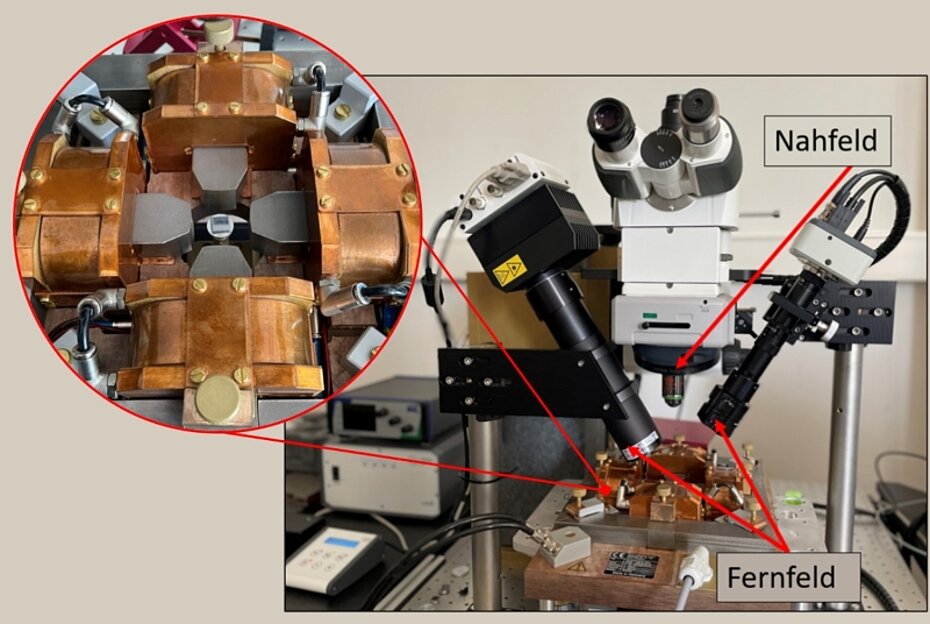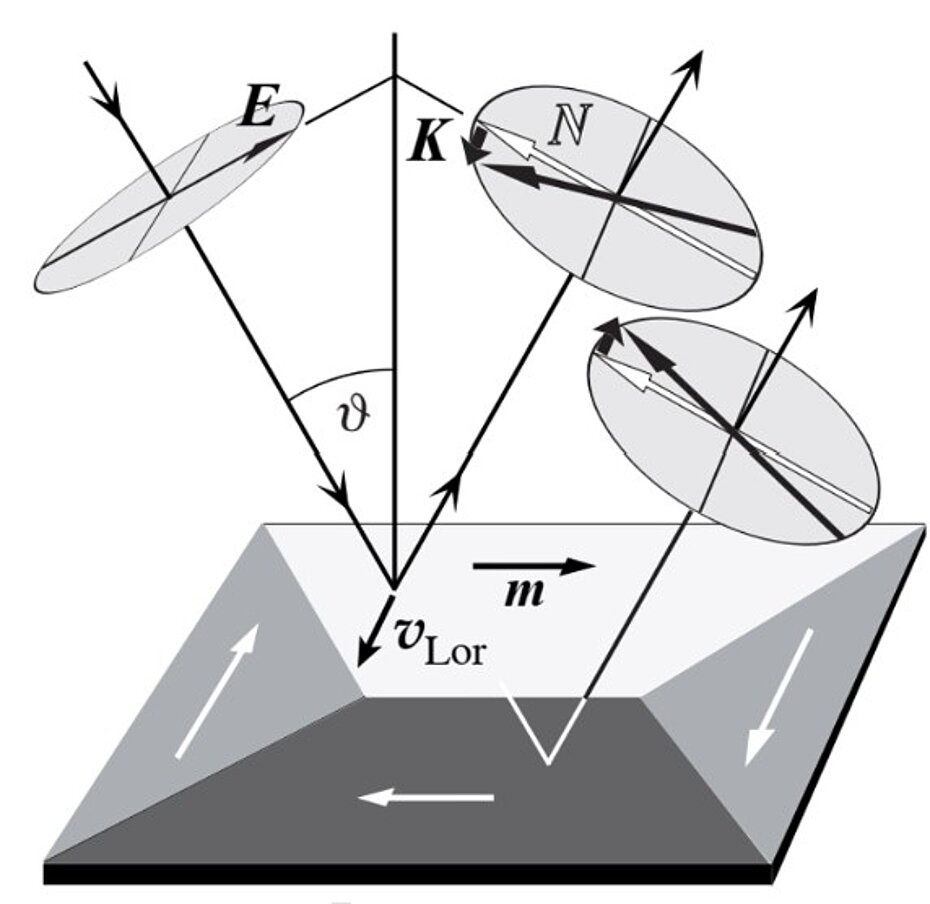Use of Kerr microscopy to characterise the development of damage in steels
The Kerr microscope used in the project is a two-in-one system. Fig. 1 therefore shows both the near-field microscopy with the corresponding non-magnetic Epiplan Neofluar objectives (20x0.5 Pol; 50x0.8 Pol; 100x1.3 Pol) and the arrangement of the far-field (Carl Zeiss Optics). During the experiment, a centred piezo-controlled sample holder ensures the positioning of the ferromagnetic sample. Magnetisation is performed by the quadrupole magnets, which are operated by two bipolar current sources (CME-KEPCO) and can generate magnetic fields of 180 mT (25 mm sample) to 700 mT (5 mm sample) depending on the sample geometry and pole pieces used.
The magneto-optical Kerr effect, discovered by John Kerr in 1876 and named after him, describes the change in the properties of polarised light when reflected by a magnetic surface. This involves the rotation of the plane of polarisation on the one hand and the change in intensity of the polarised light on the other. This is illustrated in Fig. 2 below with the aid of the incident and reflected polarisation plane, which makes the Kerr rotation visible through interaction with the magnetisation state on the sample surface (longitudinal Kerr effect).

Wissenschaftlicher Mitarbeiter
- +49 631 3724-2289jan-erik.nebel(at)hs-kl(dot)de
- Campus Kaiserslautern
- Room H1-2012

Vizepräsident für Forschung und Transfer, Studiengangsleitung "Maschinenbau, Bachelor", Fachbereichsrat AING
- +49 631 3724-2389peter.starke(at)hs-kl(dot)de
- Campus Kaiserslautern
- Room H1-2010.1

